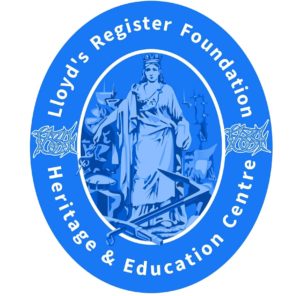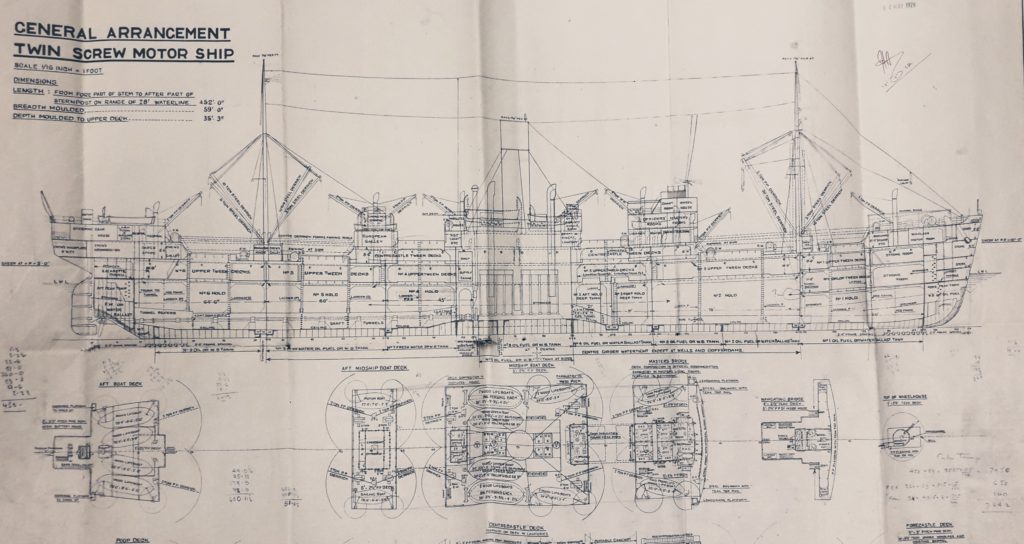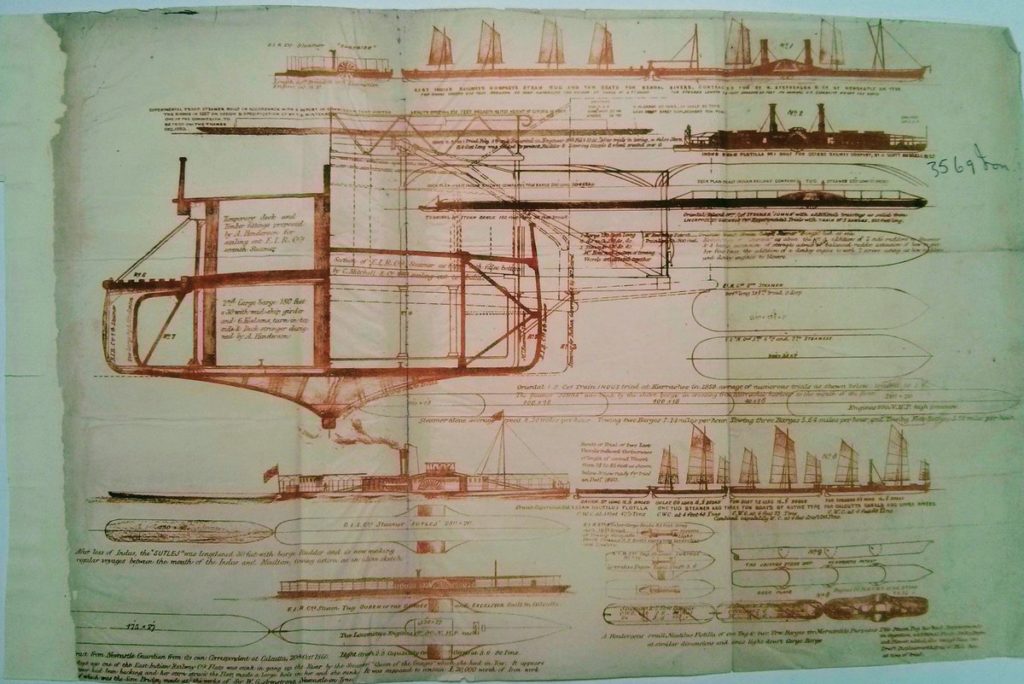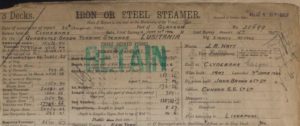 The Heritage & Education Centre (HEC) is cataloguing, digitising and facilitating free online access to over 1.25 million documents!
The Heritage & Education Centre (HEC) is cataloguing, digitising and facilitating free online access to over 1.25 million documents!
Who are we?
Founded in 1760, Lloyd’s Register is the oldest ship classification society in the world, ensuring the safety of vessels following professional survey. Today, this is continued by the Lloyd’s Register Group providing professional services for engineering and technology in sectors that include marine, offshore, energy, and inspection services for sectors from food safety to nuclear power. The profits they generate fund the Lloyd’s Register Foundation, a charity which supports science and engineering-related research and education through investment in STEM research and education. Within the Foundation, HEC are dedicated to preserving the heritage of Lloyd’s Register, and enhancing public understanding of marine engineering, science and history.
What is the historic ship plan and survey report collection?
Our unique ship plan and survey report collection is the oldest and largest of its kind in the world. Comprising approximately 1.25 million documents in more than 4,000 boxes, this collection covers records for ships classed by Lloyd’s Register from 1834 to 1960. It consists of reports of survey, plans, drawings, photographs, letters and some weird, wonderful and unexplained items. Therefore, the collection offers unique insight into global maritime history. HEC is committed to ensuring that this collection is fully catalogued, digitised, and freely available via our online portal. High quality resolution documents can be downloaded directly, and the best part is, there are already 200,000 documents online relating to over 40,000 ships to explore, with more uploads expected each month!
How is it being used?
Offering a tremendous resource of refined data, the collection is being utilised for wide-reaching research. Already, our collection is being used for the purposes of engineering research, model-making, genealogy, and for tracking the unique service careers of ships. Our collection also offers insight into the study of the development of shipyards, port towns and global industrial centres, of economic trade routes, and of the great transitions in shipbuilding and marine engineering, from wood to iron, composite and then steel, and from sail to steam to motor. Organisations like the UK Ministry of Defence are using our collections to monitor and inform salvage and marine operations on wrecks. Our digitisation project is also actively informing and enhancing the work of our grant holder network, such as CITiZAN (Coastal and Intertidal Zone Archaeological Network), who use our resources to inform maritime archaeological study and raise awareness of at-risk sites.
What to look out for
As we continue to digitise, fascinating records, items and stories are continually emerging. We’re pleased to announce that over 105 years after her tragic sinking, over thirty records for the Lusitania have emerged from the depths of our archive for upload to our website. These survey reports, plans, certificates and correspondence chart the course of her life from design, construction, liner operations, wartime conversion, through to her loss in 1915. Currently being conserved and repaired (see video below), our unique project is dedicated to ensuring the records are preserved for the future. With more than a million items still left to process, we have only scratched the surface … Let’s get exploring!
Education, Outreach & Research
One of the reasons behind digitising our archive is to open access to our collection, to bring the history of Lloyd’s Register to life and to promote maritime history. Currently, we are running a series of monthly webinars, curating online exhibitions, stories & blogs, running our podcast called Washed Ashore and seeking new opportunities for collaboration and research. We are also keen to add new voices to our website, so if you have an idea for a blog, story or online exhibition, get in touch!
Please contact Charlotte Ward, Education and Outreach Coordinator via charlotte.ward@lrfoundation.org.uk
Follow us on Twitter @LRFHEC, Facebook @LRFHEC and Instagram @lrfhec














Messaging you here as tried to reply via email, and received a remote server error:
Dear Max
I cannot thank you enough for your kindness in sending me the image of JL Sinnette.
This has made my day – if not decade!
I was’nt expecting such a speedy reply, so thank you very much again.
I’ll be keeping an eye on your website for news of your physical archive opening once more, and will no doubt be in contact again.
My very best wishes to you.
Ian Sinnette